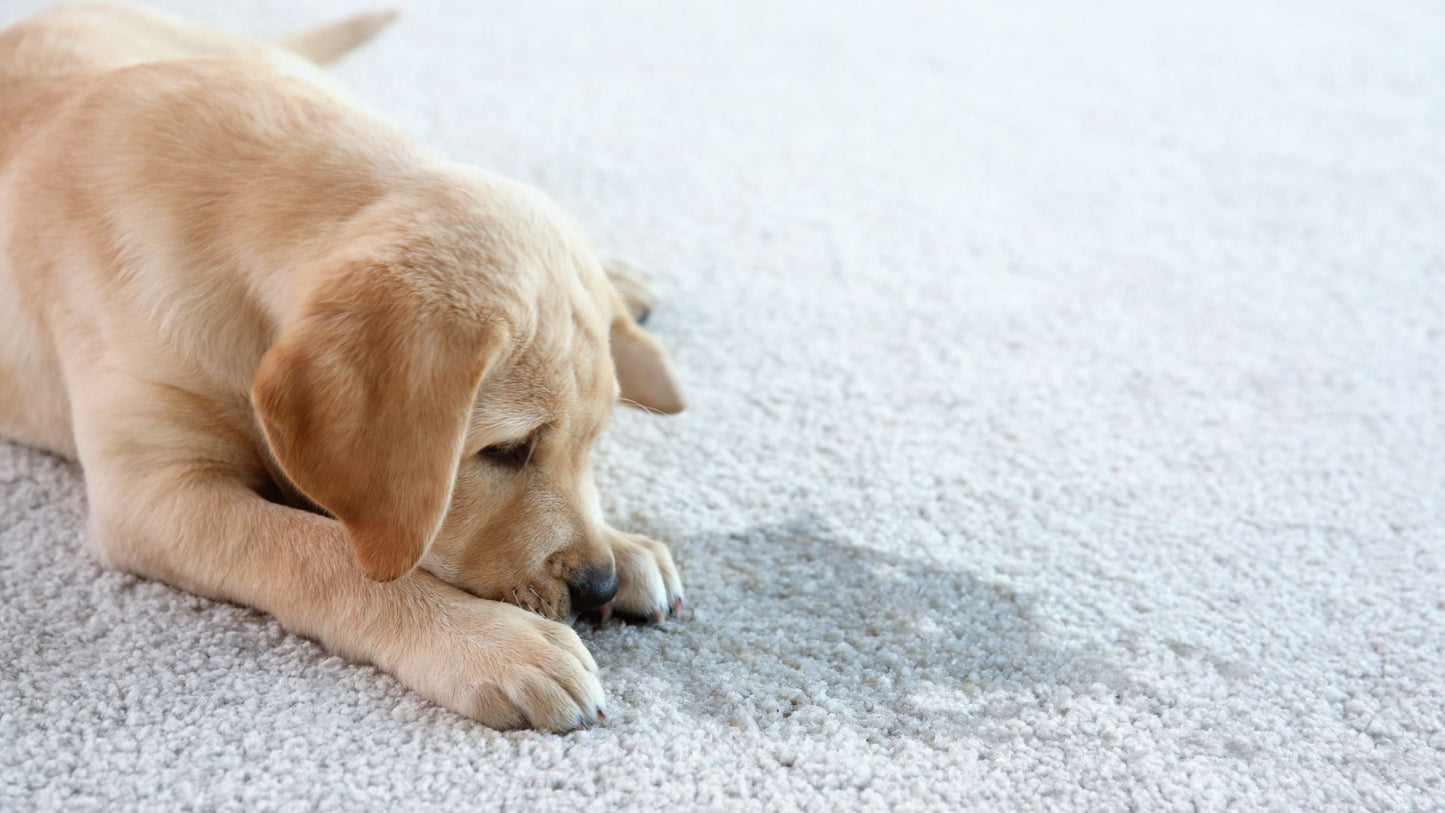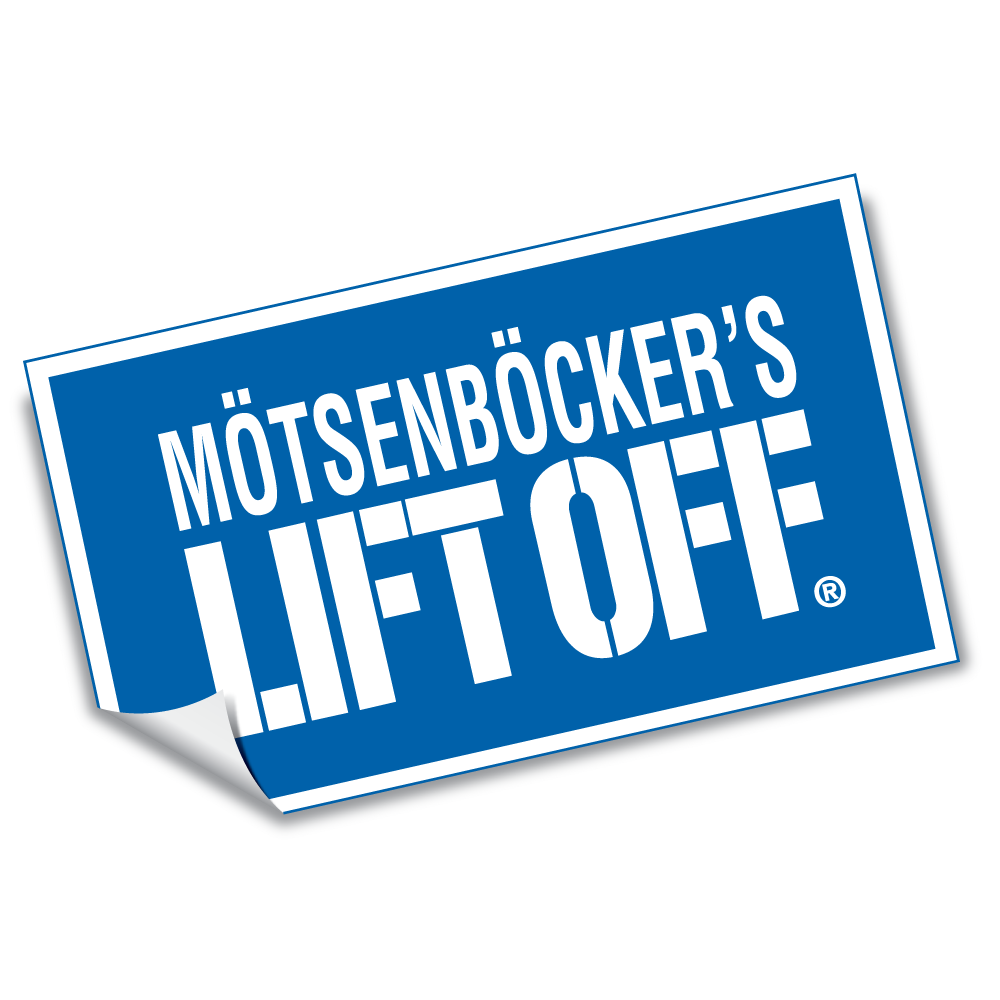
Nothing is worse than having your favorite pet get sick on your clean carpet. Upset stomachs from eating too much, consuming the wrong food and illness are just some of reasons our favorite pets get sick. That’s why being responsible for your pet means being proactive and attentive to their eating habits:
- Avoid feeding your animals table scraps. For reference, they may contain high concentrations of grease and spices that can irritate their stomach.
- Avoid chewable toys that can be easily swallowed.
- Keep an eye on any plants around your house and yard that may be harmful to their health.
Even if you keep a watchful eye on them, pets get sick, and your household carpets tend to be the target of vomit. Unfortunately, it’s your responsibility to determine what to do to clean up the mess. Don’t fear, as there’s a simple, four-step process that is effective in cleaning pet vomit.
Remove Vomit Residue and Food Particles
First, remove as much of the residue and food particles as possible with an absorbent paper towel, or clean cotton towel. By doing this, you help eliminate food particles that can get “stuck” in the carpet and damage the fiber. If the stain is still wet, continue to use more clean paper towels and cotton towels to absorb as much of the residue as possible.
Special Tools to Safely Remove Residue
If there is extra thick residue that has attached to the carpet, a soft bristle toothbrush can help to break it loose. Be careful not to fray/damage the carpet. With that in mind, there are lots of variations of carpet quality and composition, including cotton, nylon, polyester, olefin, sisal and wool:
- The Berber versions, made of wool and have a nubby texture with complete yarn loops that stand upright, are easier to clean.
- A cut pile carpet has straight strands that are cut and twisted. It tends to be fairly soft, which means you can see marks such as footprints and vacuum streaks.
- Level loop pile has yarn glued on both sides to make strands of the same height. This type is great for high traffic areas, and is often used in office settings.
- Plush style is trimmed off so that yarn ends poke up. Saxony plush, one of the most popular varieties, has short tufts that are densely packed to look like a thick carpet. It doesn’t tend to wear as well as loops.
- Twist-pile carpets, which provide texture and protection against wear, require more effort to remove pet stains. That’s because dirt, food and residue can get lodged in between the strands.
Use a Protein-Based Spot Remover To Break the Molecular Bond
The next step is to apply a spot remover formulated to eliminate protein-based stains, which is what vomit typically consists of. However, there are variations of the chemical composition due to many reasons:
- The type and color of food your animal has eaten.
- Dog treats may contain food dyes that are different in coloring and composition.
- Bloody discharge can be caused by stomach irritation and gastrointestinal issues.
- Stomach acid, typically bile, has a yellow coloration.
With all of this being considered, the result is vomit that has a combination of chemical components, primarily protein based. That’s why it is important to pursue a protein-based formulation of stain removers that can act accordingly with the pet’s vomit. The formulation should be created to break the molecular bond between the stain and the carpet surface.
For best application, spray on the protein-based stain remover; let it remain on the stain for upward of three-to-five minutes so that it can effectively break the molecular bond.
Use a Paper Towel to Absorb the Stain and Excess Remover
Then use another paper towel, or clean cotton towel, to absorb more of the carpet stain that has been impacted by the protein-based stain remover. To increase its effectiveness, standing on the paper towel over the stain will help pull more of the residue out of the carpet. The additional weight helps with absorption.
Depending on the thickness and intensity of the stain, it may require several applications of cleaner. Repeat the last two steps if needed. As a word of caution, never mix or integrate other stain removers into the cleaning process. That’s because different chemical formulations can cause a negative reaction and also set the stain.
Be cautious, as some stain removers contain chemicals that will interact negatively and can discolor the carpets and rugs. Never use bleach solutions on carpeting. It will remove coloring and can cause yellowing to occur.
Lift Off’s Food, Drink, and Pet Stain Remover
When you are looking for safe and effective stains removers, the Life Off Food, Drink & Pet Stain Remover has earned a reputation for removing pet stains with ease. It uses a protein-based process to gently remove even the toughest stains. And, as a water-based formulation, it's safe for use in your home.
Motsenbocker’s Lift Off Food, Drink & Pet Stain Remover eliminates pet stains as well as other protein-based food stains that occur around the home, and on a variety of surfaces. Because of its formulation, it is safe to use around pets and children and will not impact their health and wellbeing. If safety and efficacy is what you seek in terms of a product to remove pet vomit, this is a recognized leader in protein-based stain removers.
Don’t Let Pet Vomit Ruin Your Day!
Cleaning up pet vomit isn’t fun, but it doesn’t have to be hard. Since stains are inevitable, and pets make messes, it’s always wise to be prepared with the best stain removers and tools for the job. Use the steps above to make the make the most of a messy situation.
